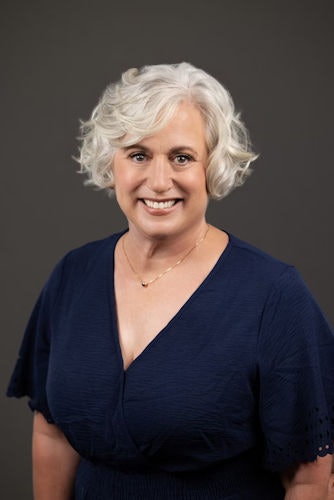It is easy for dental providers to examine a patient, assess the needs for his or her mouth, and develop a treatment plan to achieve a healthy mouth. What is not as easy is for patients to readily accept treatment as necessary, especially if nothing hurts and they must pay for treatment.
Dental patients must feel trust in the provider and be educated about the treatment that is necessary for their dental health. Good communication skills allow patients to feel as if they are heard and not forced into treatment.
When people feel they have made the decision for treatment themselves, they will go forward with planned treatment. When a patient feels coerced or that the treatment is unnecessary, he or she will likely not schedule, or they will delay treatment. According to Dale Carnegie, the only way on Earth to influence other people is to talk about what they want and show them how to get it.
 Dr. Ann D. Miller.
Dr. Ann D. Miller.
When communicating with a patient about proposed treatment, the best method is to use the 80/20 rule. The 80/20 rule is known as the Pareto Principle. The Pareto Principle is an observation that 80% of results come from 20% of efforts, inputs, or causes.
Another way to look at this is that 20% of the people do 80% of the work. Research studies at the Carnegie Institute of Technology revealed that about 20% of one's financial success is due to one’s technical knowledge, and about 80% is due to skill in human engineering, such as their personality and ability to lead people.
In sales, 80% of the sales will be accounted for by 20% of the customers. What if in the dental office 80% of the treatment presented is completed by only 20% of your patients? Where are the other 80% of patients who need treatment?
To facilitate better communication with patients, use the Pareto Principle. Invest 80% of your time in listening to your patient and 20% of your time speaking.
Effective communication involves not only expressing yourself but also understanding others. Prioritize listening to your patients over speaking. This will enhance communication, understanding, and collaboration with your patients.
Begin by using the following seven active listening skills:
- Be attentive. Sit on the same eye-to-eye level as your patient and allow no other distractions. Take notes of what the patient is saying to you in front of them. That shows the patient you are paying attention.
- Ask open-ended questions. What do you want for your dental health? How does this make you feel? What else can I do for you? Stay away from questions that can be answered with a yes or no.
- Ask probing questions. “You seem hesitant or unsure. Can you help me understand your concern? Did something happen previously that makes you feel this way? Can you explain that a little bit more to me?”
- Paraphrase what you have heard. “If I am hearing you correctly, you feel that ...”
- Summarize. Give a summary of what the patient has expressed to you in the whole conversation. Look over your notes to include everything.
- Request clarification. "Please let me know if I heard you correctly … or did I understand you correctly that …?”
- Be attuned to and reflect feelings. “I understand this is a hard decision or that this is a financial challenge …”
It is very easy for practitioners to forget that the broken tooth or the unhealthy mouth is attached to a human being who has needs and wants.
These needs and wants probably do not always align with what the practitioner thinks is important for the patient. The only way to influence patients is to talk about what they want. Patients need to feel that they are being heard and want to understand any necessary treatment before accepting it.
Patients do not like being told what they need or being scared into treatment. Taking time to communicate with patients by using the seven active listening skills listed above will build their trust and increase treatment acceptance exponentially.
Dr. Ann D. Miller is a general dentist with a passion to help other dentists navigate their journey in dentistry. She is a dental coach and founder of Dental Wayfinder, working with dentists in all stages of their dental career. You can reach her at www.dentalwayfinder.com or [email protected].
The comments and observations expressed herein do not necessarily reflect the opinions of DrBicuspid.com, nor should they be construed as an endorsement or admonishment of any particular idea, vendor, or organization.




















